To break it down real basic: the sensor is the part deep inside the camera which captures an image. It’s where the film used to be, but without film. And similar to how film cameras are classed by the size of film they use (35mm, 16mm, 110, 4×5, etc.), digital cameras have their own variety of very specifically sized sensors inside.
Because 35mm film dominated the consumer market in the 20th century, we’ve been trained to think of everything in terms that apply to that size. It has become the standard reference point for how a lens will behave. In digital photography, “full frame” (FF) sensors are the same size as a 35mm negative and so they continue using these common reference points. FF sensors tend to be found in higher end “professional” bodies (Nikon D850, Canon 5Dmk4, Sony A7r2, etc.) and come with a premium price. The far more common and affordable cameras use smaller APS-C and Micro 4/3 (M43) sensors*. These are often (in our FF-centric world) called “crop sensors,” which will make perfect sense in a moment.
If you are working exclusively with a FF camera body, congratulations! You don’t need to worry much about any of this stuff because all the common language and marketing is catering to you. If you use a crop sensor, however, there’s one critical thing to understand: Your sensor behaves exactly the same as a FF, the only difference is that it is smaller and so it captures a cropped image by comparison. In other words, the image which is projected onto it from your lens is identical, but some of it goes beyond the edges and is not captured. The same as projecting an image onto two different sized pieces of film, the image is IDENTICAL except that it has been cropped. So does everyone get that? The only thing that a crop factor indicates is that your field of view is cropped.
So, can we un-confuse things for how this actually applies?
Field of view (how much we see with a particular lens) is often described by the focal length (eg. 28mm, 50mm, etc.) as they behave on the FF standard. This can be misleading if you’re using a crop sensor body because our view is, well, cropped. An example is the 50mm lens. This is commonly recommended as a good first lens, the classic default focal length, the only lens you need, etc. In FF terms, the 50mm is a decent approximation of our natural way of seeing. If you’re using it on a crop sensor body though, you’ll have a more constrained field of view because the peripheral area is all cropped out. This is where “crop factor” gets introduced.
As a simple way to explain this, we’re told to multiply the focal length of a lens by the “crop factor” of a sensor and the result is what field of view, in FF standard terms, we can expect to see. Micro 4/3 has an easy crop factor of x2, and APS-C a slightly awkward x1.5 to x1.6 depending on the brand. So a 50mm lens on either of these would appear similar to a 100mm or 80mm FF field of view respectively, and would be more appropriate as a portrait lens than general purpose. BUT REMEMBER, the focal length is not changing, we’re just seeing less of the image. The properties of a lens remain constant regardless of the size film you project it onto.
How does this affect bokeh and depth of field?
The easiest and most unconfusing way to look at this is that depth of field (how much in front of and behind the focal plane is also in focus) and bokeh (the unique character different lenses have when rendering out of focus light) do not change because the lens has not changed. As long as you continue to think of the lens as it’s actual focal length and not by some approximation using a crop factor, this is clear. A 50mm on M43 might give the view of 100mm on FF, but it remains a 50mm regardless. When people begin expecting that 50mm to behave as a 100mm is where they run into problems. Keep it simple and just remember that it is the same lens however you crop the image**
The character and amount of bokeh (out-of-focus blur) is essentially unaffected.
So does any of this change the speed of a lens?
This one is easy: absolutely not. The lens has exactly the same ability to gather light whether you crop the image or not. After crop factoring focal length, some people also apply crop factor multiplication to the f-stop. The idea is to indicate FF equivalent depth of field that relates to the FF equivalent focal length. It’s easy to assume from this that the properties of the lens are changed from one body to another. But since we now understand that all we’re doing is cutting the edges off of the image, it should be immediately obvious that the characteristics of the lens itself have not changed. Your exposure will not be be any lighter or darker. The f-stop is a mathematical measurement of how much light enters the lens and this does not change due to the size of your film or sensor.
If you want to keep things simple, don’t crop factor your f-stops. You just need to remember that shorter focal lengths have more depth of field, and smaller sensors use shorter focal lengths.
Different focal lengths and their uses:
So armed with all of that information, I’m going to describe briefly the categories of focal lengths. We’ll ignore crop factors and just look what actual focal lengths fit these groups from one system to another.
Ultra Wide Angle:
These lenses show an extreme wide field of view beyond normal peripheral vision. If straight lines take on a curved, bulbous warp, it’s called a fisheye lens. If straight lines remain straight (as in the above example), it’s called rectilinear.
The UWA look is very dramatic and gives the sense of expansive distances and/or very intimate closeness. Objects and figures near the picture edge will look stretched and distorted. This focal range can be fun to play with, but it takes some practice to use effectively. It tends to make for very lively, kinetic images and makes small spaces seem huge.
Wide Angle:
Wide enough to get a lot of peripheral information, but with a natural look. Use would commonly be to create immersive images that invite viewers to place themselves into the scene. This range is common for street photography and for portraits that include a lot of environmental context.
Normal:
This field of view represents about what our eye sees in a natural way. It is comfortable and easy to relate to. It is, generally speaking, a neutral point of view.
Telephoto:
Also often called “portrait” on the shorter end, this length puts enough distance between photographer and subject that scenes begin to have a more compressed look. Short telephotos are commonly used for portraits because the compression reduces distortion and gives a more flattering result. Telephoto range is also popular in landscape photography to compress and control a scene, and in cases where you can not get closer to your subject.
Super Telephoto:
This is simply a continuation of the qualities of a telephoto image: more reach, more compression. Super Telephoto lenses are generally big and expensive and best suited for niche uses that require such a long reach such as wildlife or sports photography.
Focal length ranges on different sized sensors: Remember, cameras and lenses are modular, and how you combine them can vary. So a focal length does not describe the field of view unless you also know the format size, and vice versa
Full Frame (high end Nikon, Canon, Sony, Leica):
Ultra Wide Angle – 21mm and under
Wide Angle – 24-35mm
Normal – 40-50mm
Telephoto – 85mm – 200mm
Super Telephoto – 300mm and over
APS-C (standard Nikon, Canon, Sony, Fuji):
Ultra Wide Angle – 14mm and under
Wide Angle – 15-22mm
Normal – 25-35mm
Telephoto – 50mm – 135mm
Super Telephoto – 200mm and over
Micro 4/3 (Panasonic, Olympus):
Ultra Wide Angle – 10mm and under
Wide Angle – 12-18mm
Normal – 20-25mm
Telephoto – 42.5mm – 100mm
Super Telephoto – 150mm and over
Relative depth of field in focal lengths, regardless of sensor size (at similar f-stops):
21mm and under: extremely deep
24-35mm: deep
40-60mm: moderate
80-135mm: shallow
200mm and above: extremely shallow
Future posts:
I intended to cover a few common issues in one overview, but realized pretty early on that it wasn’t going to be possible. I have a list growing for more articles like this, so please comment if there’s any area of using your camera that you wish you had a better handle on!
*There are many other sensor sizes both larger and smaller than the three described here, though anything smaller than a M43 is probably going to have a non-removable lens and will often advertise their product using FF equivalent focal lengths rather than actual focal lengths. Larger sensors enter into the “medium format” category and are so specialized, bulky, and expensive as of this posting that a typical consumer would not consider them a realistic choice. But just in case you were wondering, yes, crop factor continues in the opposite direction (giving more image rather than less) with medium and large format cameras.
**One wrinkle: In simplest terms, cropping does not impact the Depth of Field, though in actual practice DoF will be slightly reduced. But if it’s just a crop of the same image, how can that be? What happens is smaller sensors enlarge the image more in the end result, and this makes us more aware of critical focus vs acceptable focus. This is because, in enlarging the cropped view, we can more accurately see where what seemed like acceptably sharp background details are actually a little soft. It is still the same image being captured, but the enlargement makes soft focus more noticeable. Generally, this is only an issue if you’re scale focusing or shooting at hyperfocal distances (techniques that the average digital photographers probably doesn’t use at all), in which case you just use your DoF scale more conservatively by a stop or so. This is also only noticeable when different formats are printed at similar sizes. This caveat is mostly just included for the “well actually…” crowd. Feel free to ignore it.



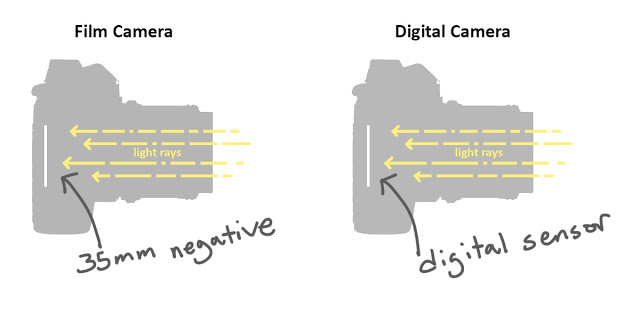
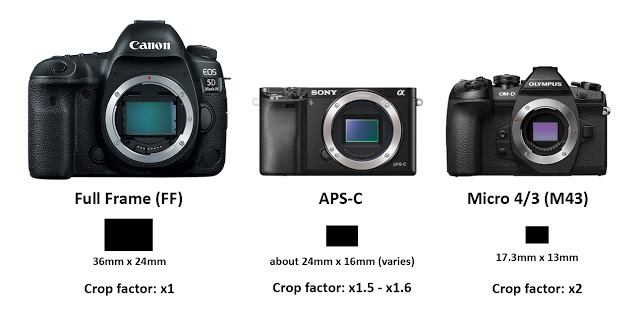
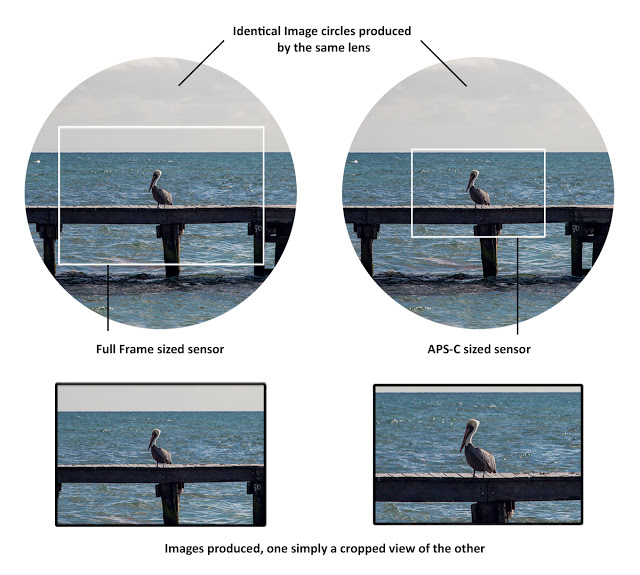

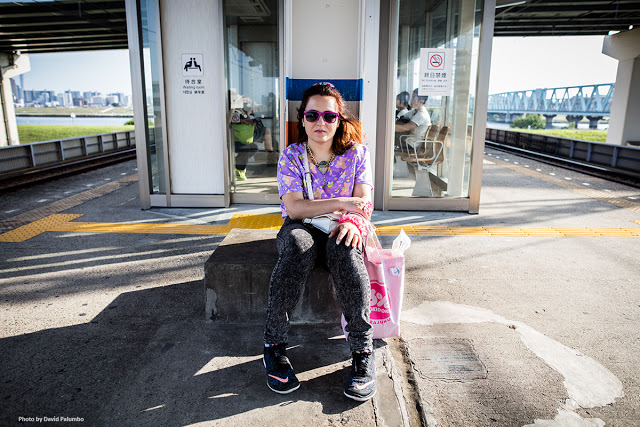
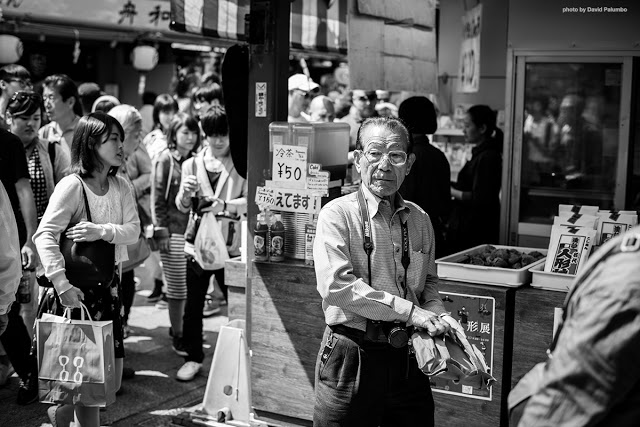

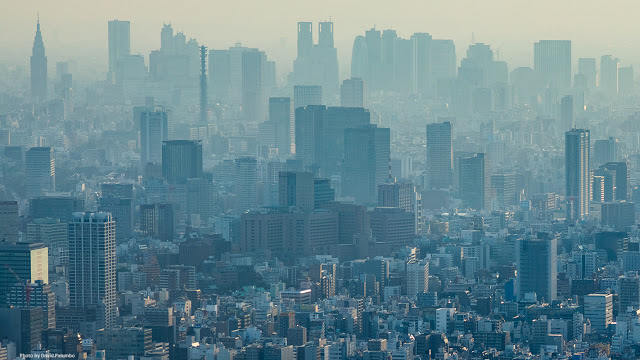
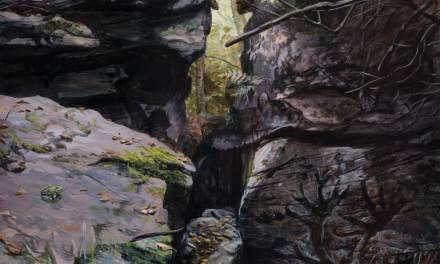
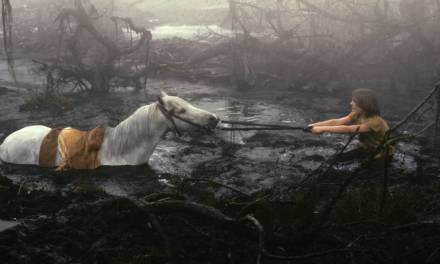
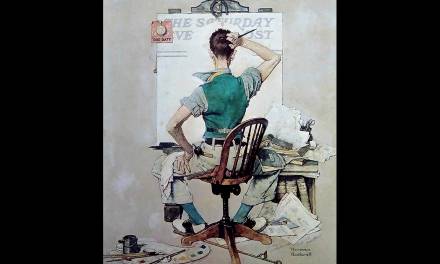


Thanks David! This is a clear and concise explanation of what I experience as the mildly dyslexic terminology of cameras and lenses.
This was incredibly informative, Dave! I had zero knowledge about sensor sizes before this. I feel like my photography (shooting models and paintings) has always been a bit of a stumble in the dark, so I’m really looking forward to the rest of this series. Thanks!
Appreciated! I know it, some pretty dense material at times
Sure thing, thanks so much! Feel free to drop suggestions or followup questions too!